Building a democratic classroom at The Edge
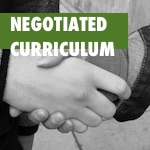 Part of the power of implementing a negotiated curriculum is that it doesn’t just center student voice, it actually moves the learning space towards a democratic classroom, a place where students can advocate for themselves and their learning interests, goals and styles. It’s an important piece of the personalized learning plan (PLP) picture.
Part of the power of implementing a negotiated curriculum is that it doesn’t just center student voice, it actually moves the learning space towards a democratic classroom, a place where students can advocate for themselves and their learning interests, goals and styles. It’s an important piece of the personalized learning plan (PLP) picture.
The Edge Academy at Essex Middle School, in Essex Junction VT, has been doing project-based learning alongside negotiated curriculum for the past six years. Facilitators Lindsey Halman and Phil Young explain what makes it work and what makes it especially powerful for middle schoolers.

A full transcript appears below.
Negotiated curriculum and project-based learning at The Edge
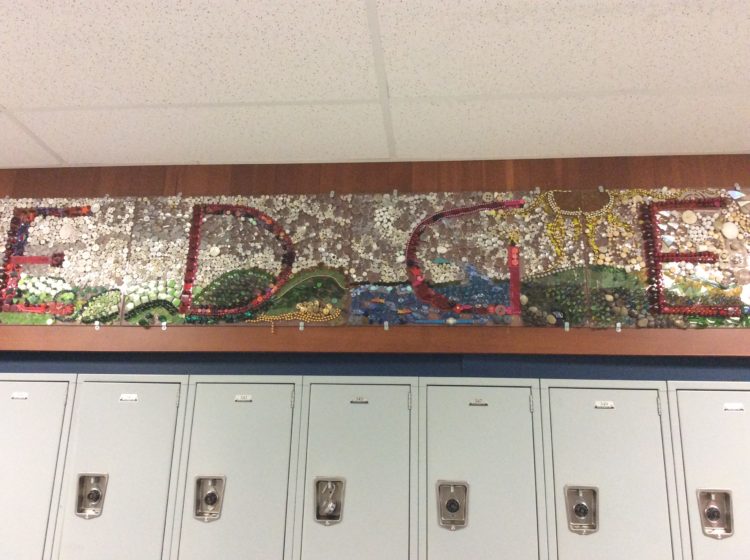
How it works
Lindsey: We really begin the year with doing a lot of work around like what it is to be a community, and developing kind of our own guidelines for how we’re going to work together. The negotiated curriculum process really, I think, empowers the kids the most. They start with the questions and concerns that they have about themselves and the world. From there, we develop this year-long theme. Within that, students get to choose their pathways. They basically can decide what they’re going to research, study, learn about, do, make, whatever it is.
So, I think that that really sets the stage for empowering them to use their voices in a positive way. It’s not necessarily, you know — Yes, our school, we use developmental design, and we start off every morning in our advisories with our circle of power and respect. But, those are — I think they just all go together with the process of the projects.

But then students are willing to ask questions, and advocate for themselves, and guide their project work, and do things that — I think a lot of times they surprise themselves with what they do. They can’t necessarily envision what the end of a project looks like. Or, they might have a vision, and it might change along the way, but I think they feel really good at the end and they are really surprised at the outcomes. And when they look back and reflect on the skills of what they’ve gotten through the project, not just like the product of what came out of it, I think they recognize that, you know, they learned a lot of important life skills.
Phil: In the beginning we really challenged them to articulate why the project is important, how it’s connected to the overall theme, and what they see is going to be the end result. So, I think that discussion back and forth is really kind of how it gets going, too.
Once students brainstorm, how do you help them make concrete plans for their projects?
Lindsey: We have a pretty structured process that, even though projects sometimes look like creative chaos. Each week we give them a weekly goal, which gives them the focus for the week. They start with coming up with some initial research about this idea they might have just to kind of get a sense of “what is it that I’m going to be interested in.”

Then, from there, they develop some big, driving, questions and sub-questions to drive their research. And then they develop a community partnership, and they do interviews, or they meet with their partner, and they do more research, they start designing, or building, whatever it is.
But each week it is very clear what our whole team weekly goal is so that there’s accountability in that we see that they’re moving forward with their project. But, they might be building a robot, and they’re working on that, and at the same time they’re developing a partnership with a community member. And everyone on the team is doing that. So we can help facilitate that process. And, it’s very much kind of, there’s scaffolding to it because, I think if we just said go ahead they wouldn’t know how to do it.
Phil: Which we used to do, actually. We used to have a different structure than we have now. Having the weekly goal, and then every week when we have our gathering meetings, we add a new goal. All the goals are right there on the page, so every single goal they’ve had for the entire year is listed right there. All those goals have something on their PLP, so we can easily see if it’s been done or not. It’s easy to say, “Oh, it looks like you need to work on this community partner reflection.” So, everything is just like right there. All the assignments, and all the outcomes are on their PLP’s.
Lindsey: They also, on their PLP’s, they have a weekly reflection. Many of them either make like a YouTube channel to reflect, or they do like a Google Presentation, or some Prezi. So they can choose the format for how they’re gonna present their weekly reflection, but it’s the same three questions every week: what did you accomplish this week; what do you want to work on next week; and what support do you need from an adult. That way you can be aware of what they need. So there’s that accountability piece, too, every week. We’ve definitely broken it down, cause we’ve learned over six years how to really get to a good end result, and like what specific tasks need to happen along the way.
What kind of feedback have you gotten from parents and families around the projects?
Phil: This year, we didn’t have a lot of questions about projects this year.
Lindsey: No, and it was interesting because we had a whole new group — every year we have a whole new group of 7th graders that never experienced the project. I think in the beginning the parents are maybe a little anxious about them. But, I think the level of involvement really varies. Like, some parents, for instance, like our trebuchet group, they got really — they were really hands-on involved, cause it involved actually, like, they were a partner. You know, and they to their lumber yard, and worked with them with building, and welding, and all sorts of things. So, that’s a really closely tied, you know, relationship.

But then there are some parents that just kind of hear about it from, you know, at their conferences, like along the way, you know at the PLP conferences throughout the year they’re hearing about it. Or they’re helping them, you know, get materials, or connect with this person. But some parents maybe didn’t even know much until they came last night to the project fair and just kind of trusted that there was something that was making their child excited about coming to school every day.
Phil: Parents have a wide range of how they get engaged in the school.
Lindsey: Yeah, I was also thinking of parent engagement. Like, we always let them know, like give them a heads up, “I’m taking your child to see so-and-so in Burlington Tuesday.” So they have the heads up, I mean they always know we’re going out, but they never question that piece, either. I think that’s exciting for them, like that their kids are getting to meet experts in the field and have some real-world experiences. So, no one has ever, you know… I think it’s always been — this year, it’s just been really positive. And the parents were really impressed last night.
Phil: Yeah, they were.
Lindsey: They were wondering, “What is an end result going to look like?”
Phil: And they were surprised. *laughs*
What are some of the benefits to middle school students of negotiated curriculum and project-based learning?
Phil: I’ve heard more than ever, this year, kids say, “This is what I want to do when I grow up. I want to study this. How can I — what do I have to do to have this for a job?” I heard that numerous times from all different kids about various things. One kid just said “When I grow up, I want to be able to do some backyard sugaring at my house.” He also decided he wanted to become a doctor. So, I just think that giving them the experiences of seeing what they could do is beneficial.
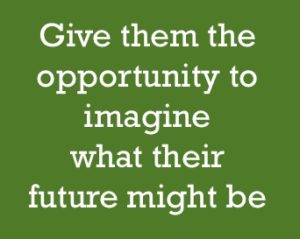
Lindsey: Yeah, I mean, career opportunities in the future, giving them the opportunity to imagine what their future might be. But then also just all the skills that there are in such important life skills, like communications skills. A lot of them this morning when they were reflecting on last night’s success, they said: “You know, I didn’t even need to use my PLP to refer to, I just talked.” And we’re like, “That’s even better. If you can talk about what you learn without having to reference anything, like you can be articulate, that’s incredible. Cause many adults can’t do that.
I think our relationship with them is unique, too. I think it’s a different type of student-teacher relationship because of the way we work our team.
Phil: We don’t have all the answers, and we’re trying to — we’re basically just working with them to try to help them be successful, but we don’t know everything.
Lindsey: Yeah, and there’s times when they get frustrated with us, or with themselves, because it might not be what they envisioned, but then, you know, we work through it, and problem-solve together. There’s a lot of that. So the communications skills and being able to advocate for themselves, and feel empowered, that they can do things — they get really a sense of pride when they see their projects.
What do you use for assessment?
Lindsey: We have four rubrics. One is on conducting research, and then group task and group work, and then one is on preparing for a presentation and giving a presentation. We actually had them, two weeks ago give their presentations to the whole team–
Phil: And that’s how we really motivated them. Because we scored them.
Lindsey: Yes.
Phil: We met with them individually to go over where they were at in that moment, and then they had another two weeks where they could really focus in and present on what they actually did. That helped.
Lindsey: They got a lot of feedback from their peers, and that feedback was good. Like, “This is what’s looking good and you need more here. Or whyn’t you try this.”
Phil: And one of the main challenges was getting all the information in there. Because they had so much stuff. So they had forgotten all the stuff they had done, so it gave us a chance to say “Remember when you did this and this and this and this? Show some evidence for this.” So that worked out really well.
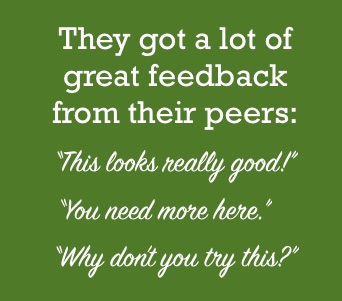
Lindsey: What this has really shown us is that kids can dive really deeply into a passion. And it may go– *gestures* this way or that way, but it’s still around their main idea, and that we can actually slow down the feedback that we give them and be really thoughtful about how we approach their work. And we can have more time with them individually, too. It gave us so much more time to do things individually with them. I thought it was a better model. And of course our model’s always evolving. It never happens the same, it keeps getting better and better.
At the end of our projects, we had them make a map of their curriculum connections. Because I think it’s really hard, in the beginning, to see how it connects. They look at how it connects to different subject areas: sustainability, technology integration, the 1:1 piece and community. So they can map it out, and as they’re going through it, they say, “Oh. Wow! There was a lot of math in this project. I didn’t realize I was doing all this math.” Or there was a lot of communication.
I think of the playwright group. Like: writing a play, and all the drafts and the edits, and then helping people and making sure it flows and adapting — and they talked about all the changes they made and the challenges they had…
[soundcloud url=”https://api.soundcloud.com/tracks/187504390″ params=”color=ff5500&auto_play=false&hide_related=false&show_comments=true&show_user=true&show_reposts=false” width=”100%” height=”166″ iframe=”true” /]
Phil: And the songwriters, they’re writing all their lyrics, that’s like a poetry unit. What amazing writing they did just there — it was incredible. And their lyrics are so powerful. It’s not just simple.
[soundcloud url=”https://api.soundcloud.com/tracks/188696336″ params=”color=ff5500&auto_play=false&hide_related=false&show_comments=true&show_user=true&show_reposts=false” width=”100%” height=”166″ iframe=”true” /]
What makes this so powerful for middle grades students?
Lindsey: I mean this is a time when they’re so hoping to find who they are. Who they are, what they’re all about, what the world’s gonna hold for them, if they’re really lost — sometimes they feel disconnected — it’s a time when you have to engage them. It’s a make or break time.
So many kids have told us that they– actually we did an 8th grade closing circle the other day and a lot of them talked about feeling really good about their place and their friendships and their peers, and feeling really good about the work that they’ve done, feeling really confident as they move on. I think too often kids are spoon-fed information and given things to do, and it could be challenging, BUT… And this is a way to do a different kind of challenge.
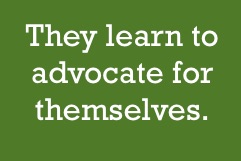
They also learn to advocate for themselves. Often this age group I feel like they’re so inside themselves that this really pushes them to come outside of themselves and talk to adults and meet with people and have adult conversations and problem-solve and work through a lot of different kinds of problems. Because these problems are not cut n’ paste. There’s a lot of problems that come up with each project and we’re pulled in a million directions and we can’t always give them a hundred percent of our time and energy, so they have to problem-solve on their own, or seek people out that can help them.
What advice would you give to educators starting out with negotiated curriculum and project-based learning?
Lindsey: Basically, you have to go for it. I don’t know how to say it in a more articulate way.
This is what I believed ever since I became a teacher. This way of teaching and working with kids. And I believe a lot of teachers believe that in their hearts. But if you don’t just go for it and let go a little bit and take some risks — okay a LOT of risks, there’s a lot of risks — and it might look messy and you might feel like things are out of your control and they’re not out of your control. You just have to remember that you’re working with twenty or forty individuals and everyone needs to have a part. It really does need to be a democratic process. So all things we know about best practice and teaching and middle-level practice.
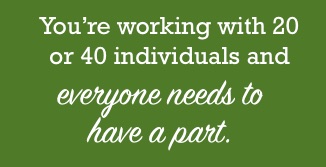
If you kind of go for it and not pull back when it feels like scary or intense or messy or when it feels like a failure — because we’ve felt like a failure many times —
Phil: Oh yeah. Things I wish I could just go back and… *makes rewinding motion*. But it gets better every year.
Lindsey: Yeah, and I think start with really looking at your relationship with kids. What’s your relationship with kids, and how do you view them?
It gets incorporated into who you are, into your own life, and then you bring your passions to the kids. Like, I love to dance. We worked with a dancer. I don’t care if you don’t like to dance: we’re going to explore movement in our humanities class.
Phil: You can share your own passions and also learn about theirs.
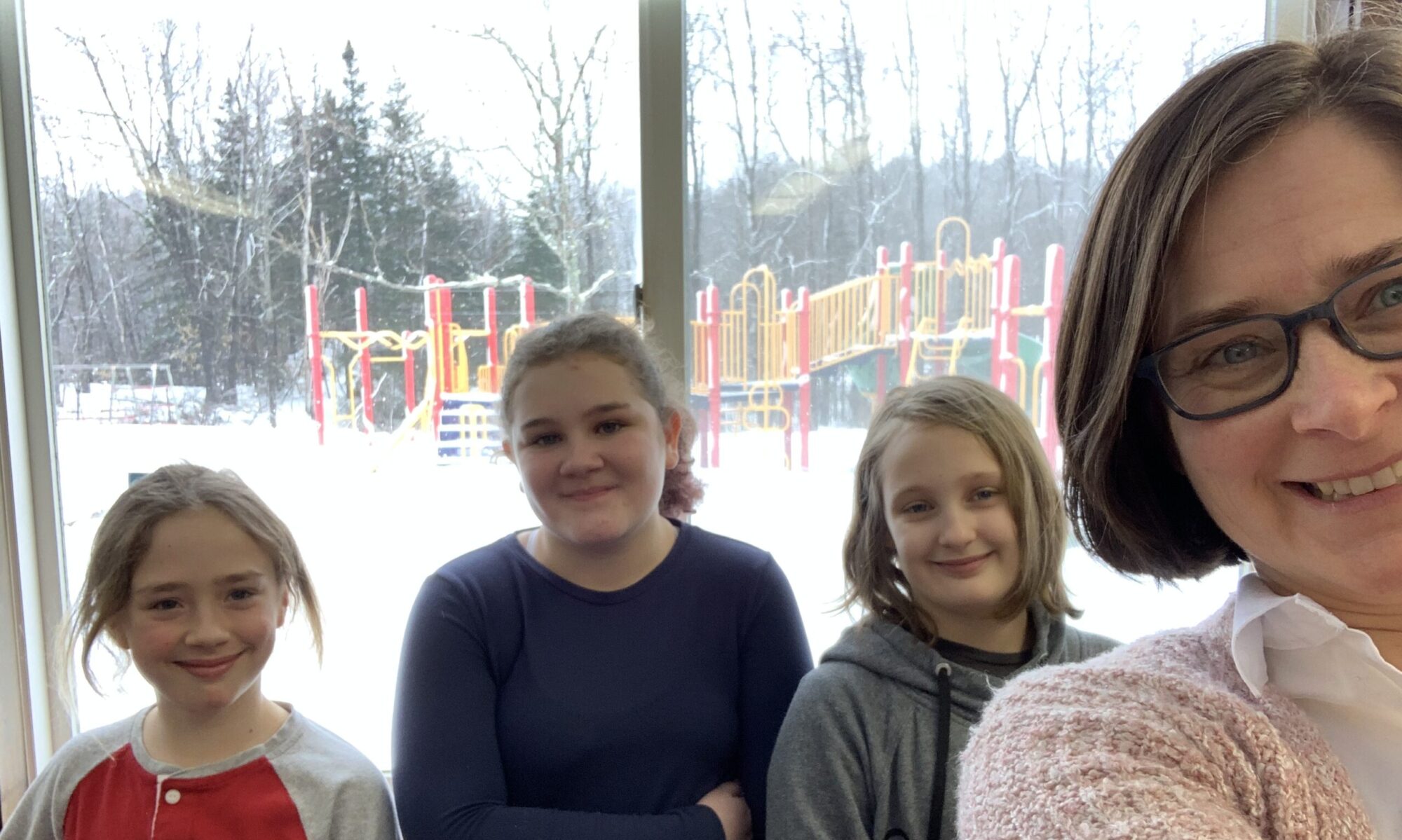

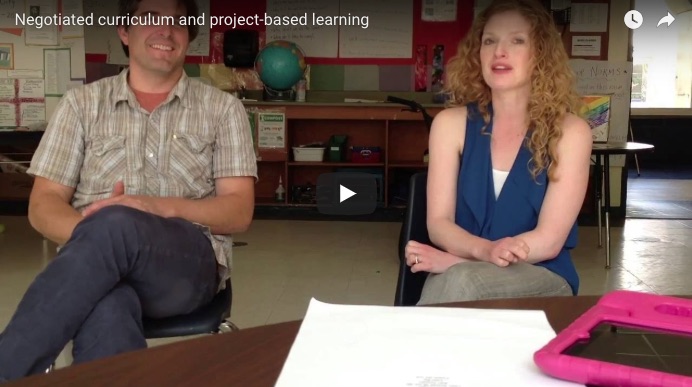
Comments are closed.